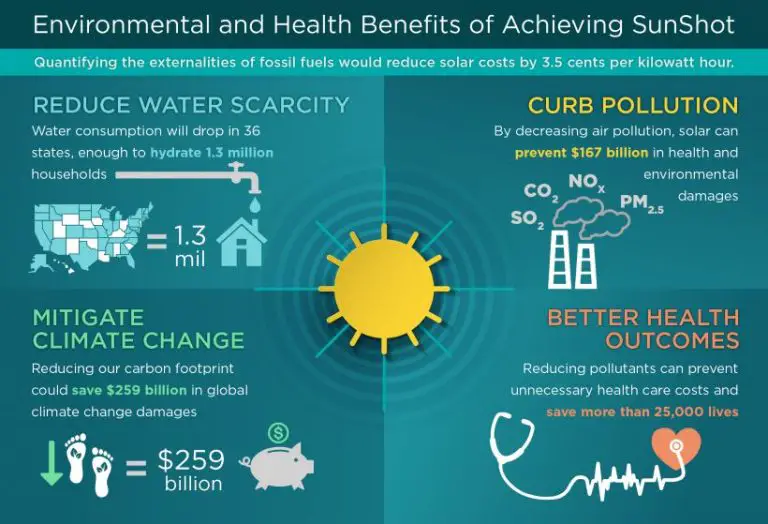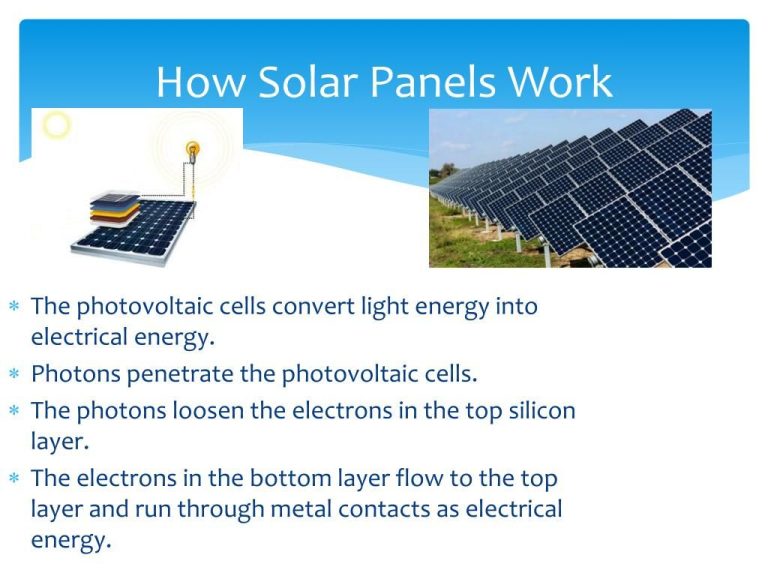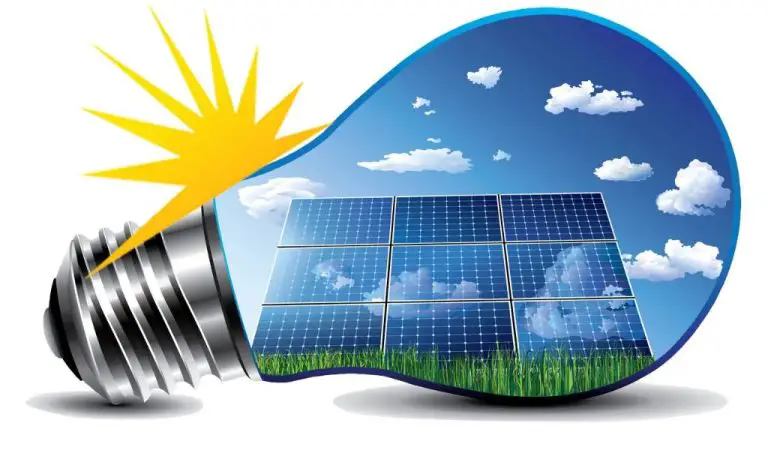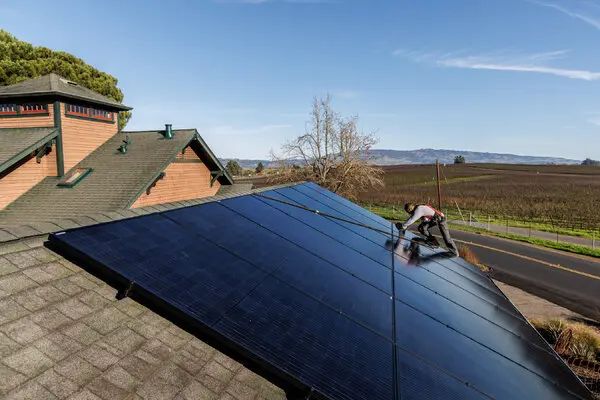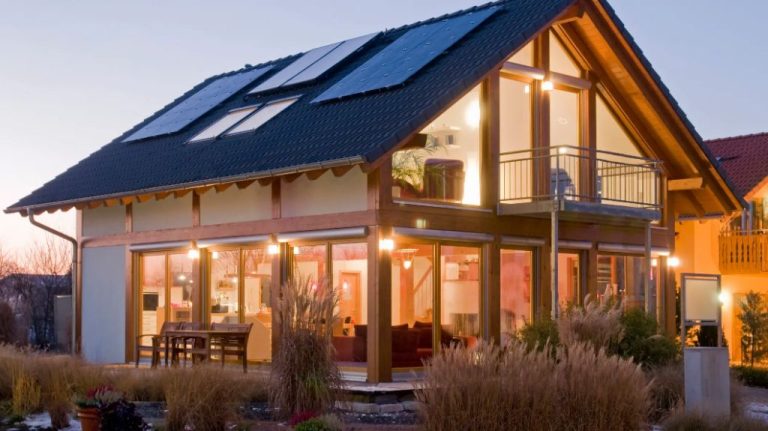Does Grass Grow Under Solar Panels?
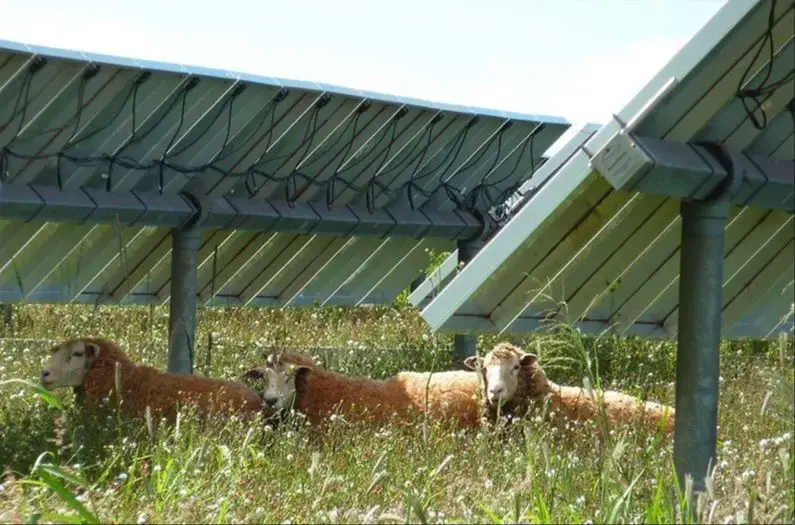
With the growth of solar power, more and more solar panels are being installed across landscapes. This leads to an important question for landowners, farmers, and solar developers – does grass grow under solar panels? In areas where solar panels are being placed in fields, understanding how grass growth is affected is especially critical.
This article will dive into the details around grass growth under solar panels. We’ll look at how solar panels impact sunlight, grass growth requirements, research on vegetation management for solar farms, the best grass types to plant, and key maintenance tips. The goal is to provide a comprehensive overview on whether grass can grow under solar panel installations.
How Solar Panels Work
Solar panels work by absorbing sunlight and converting it into electricity. According to How do solar panels work?, solar panels contain photovoltaic cells made up of silicon that act like an energy conversion device. When sunlight hits the cells, the photons are absorbed by the silicon atoms, causing electrons to break free and flow. This generates a DC current that travels through wiring in the panel to an inverter which converts it to AC electricity that can power lights, appliances, and more in a home or business.
Essentially, sunlight provides the energy source for solar panels to create renewable electricity. The photovoltaic effect causes electrons to be knocked loose when exposed to sunlight, generating a usable electric current. Solar panels do not require direct sunlight to produce electricity, they can still generate power on cloudy days or when light is reflected onto them. But greater exposure to unobstructed sunlight leads to higher electrical output.
Do Solar Panels Block Sunlight?
Solar panels allow some sunlight to pass through to the ground below, but they do block a portion of direct sunlight from hitting the area underneath the panels (SolarReviews.com). This is because solar photovoltaic panels absorb sunlight and convert it into electricity. The solar cells in the panels capture photons from sunlight and convert them into an electric current.
Solar panels are designed to be efficient at absorbing as much sunlight as possible while still being cost effective. Most solar panels will block about 95% of direct sunlight. However, they still allow some diffuse and indirect light to pass through. The amount of light blocked depends on the panel materials, design, tilt, and spacing (Solarimpact.com).
While solar panels do not permit all sunlight through, studies have found that areas underneath solar arrays still receive sufficient sunlight to allow vegetation and plant growth (SolarReviews.com). The areas under panels are shaded and sheltered, creating a microclimate that is cooler, more humid, and less windy. For certain plants and grasses, this can actually be beneficial for growth.
Grass Growth Requirements
For grass to grow successfully, it requires three key elements: sunlight, water, and nutrients.
Sunlight is essential for grass growth. Grass needs between 6-8 hours of direct sunlight per day for photosynthesis. Photosynthesis allows the grass plant to convert sunlight into usable energy and promotes growth. Without adequate sunlight exposure, grass will become thin and discolored [1].
Water is another critical requirement. Grass needs about 1 inch of water per week from rain or irrigation. The water enables the roots to absorb nutrients, keeps the grass blades cool, and allows for transpiration. Insufficient watering will cause the grass blades to dry out and die.
Finally, grass needs nutrients like nitrogen, phosphorus, and potassium to thrive. These nutrients allow the grass to develop a healthy root system, repair damage, and produce lush green growth. Fertilization provides an added nutrient boost when the soil lacks certain elements [2].
Studies on Grass Under Solar Panels
Recent studies have examined how grass grows under solar panels compared to full sun conditions. Research from the National Renewable Energy Lab (NREL) found that grass receives 30-50% less sunlight under panels, but still grows relatively well with some maintenance [1]. The shade provided by the panels reduces evaporation, helping the soil stay moist. Researchers also observed taller grass under panels in hot and dry conditions, likely due to the reduced heat stress. Another study in Minnesota on agrivoltaic installations found 70-90% grass cover under panels compared to full sun control plots [2]. While grass may grow slower under panels, it can still thrive with proper maintenance. The studies demonstrate grass can coexist with solar installations.
Best Grasses for Solar Installations
When choosing grass varieties for areas under solar panels, it’s important to select shade tolerant grasses. Since solar panels block some of the sunlight, the grass underneath needs to be able to thrive with less light.
Some of the best shade tolerant grass varieties include:
- Fine Fescue – This type of fescue grass grows well in shaded areas and requires less watering and mowing than other grasses.
- Perennial Ryegrass – A hardy grass that can handle partial shade. It has good wear tolerance.
- Tall Fescue – Grows thicker blades than fine fescue so it can hide bare spots. It needs occasional watering but tolerates heat and shade.
- Zoysia Grass – A warm season grass with good shade tolerance. It greens up later in spring and goes dormant earlier in fall.
- Bermuda Grass – Another warm season option. Some new hybrid Bermuda grasses are bred specifically to handle shade.
When choosing grass, make sure to select a type suitable for your climate. Also consider maintenance requirements, as some shade tolerant grasses need less mowing and watering.
Maintenance Tips
Proper maintenance of the grass and vegetation under solar panels is critical for ensuring their performance. Here are some best practices for maintenance:
Mowing: Grass should be regularly mowed to a height of 3-4 inches, avoiding overgrowth that could shade the panels. Mowing can be done with standard lawn equipment but specialized low-clearance solar farm mowers work best. Mowing frequency depends on grass growth rate, often every 2-3 weeks during peak seasons.
Watering: Adequate moisture is needed for grass growth. Drip irrigation under panels or movable sprinklers are good options. Water requirements vary by climate and grass type. Avoid over-watering which can cause runoff and erosion.
Fertilizing: Apply 2-3 fertilizations per year for optimal grass health. Slow-release organic fertilizers are recommended to avoid rapid growth spurts. Fertilize in early spring, early summer, and fall in most climates.
Benefits of Grass Under Solar
Having grass underneath solar panels can provide several benefits. First, grass helps improve the aesthetics of a solar installation. Lush green grass makes the area under and around solar panels more visually appealing. This is especially important for solar installations in residential areas or on commercial properties. Grass creates a tidy, maintained look compared to bare dirt or gravel (Source).
Second, grass helps control erosion under solar panels. The root system of grass holds soil in place and prevents rain and wind from washing sediment away. This protects the structural integrity of the site and prevents rain from washing dirt onto nearby properties. Grass minimizes the need for additional erosion control methods like silt fencing, straw wattles, or hydroseeding (Source).
Challenges of Grass Under Solar
While grass can grow under solar panels, there are some challenges that need to be considered. Two main challenges are limited sunlight and access issues.
Solar panels inevitably block some sunlight from reaching the ground below. This reduction in sunlight can inhibit grass growth, especially dense shade-loving varieties like fescue. Grass requires at least 4-6 hours of direct sunlight per day for adequate growth. Under solar panels, the grass will receive filtered light but may not meet the minimum daily light requirements (Source).
Another challenge is restricted access below the solar panels. Mowing and other lawn maintenance becomes more difficult with solar installations overhead. This can lead to uneven grass growth and weeds if the area under the panels is not properly maintained. The limited access also makes it harder to spot and treat disease outbreaks like fungal infections (Source).
Conclusion
To recap, grass can grow under solar panels when properly installed and maintained. The basic requirements for grass growth – sunlight, water and nutrients – can still reach the area below panels through partial shading and rain/irrigation. Certain grass types that tolerate shade are recommended. While grass may grow slower and be thinner under panels, the benefits of erosion control and aesthetics often make grass the preferred ground cover for solar installations. With careful planning and maintenance, grass and solar can successfully coexist.

